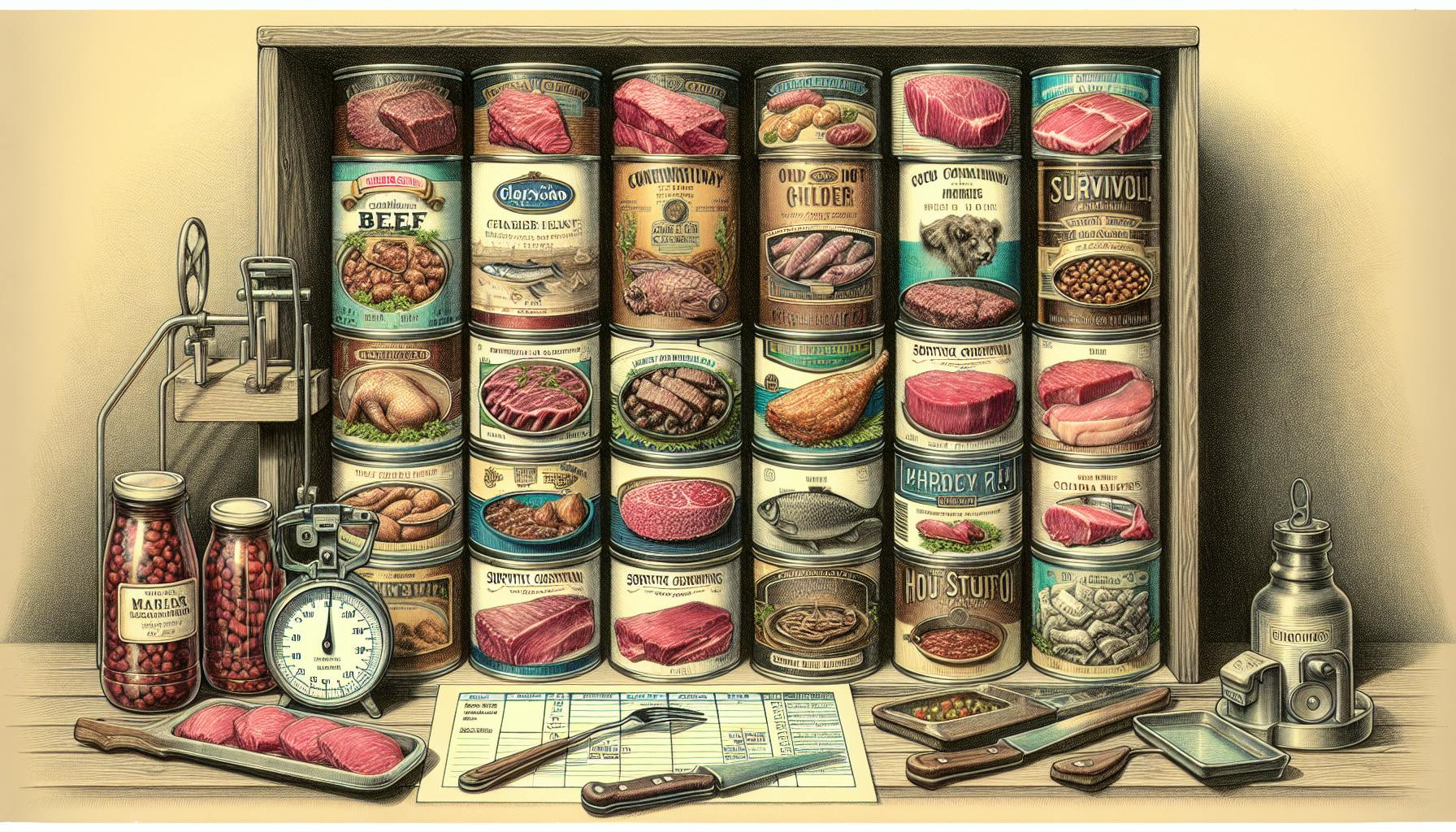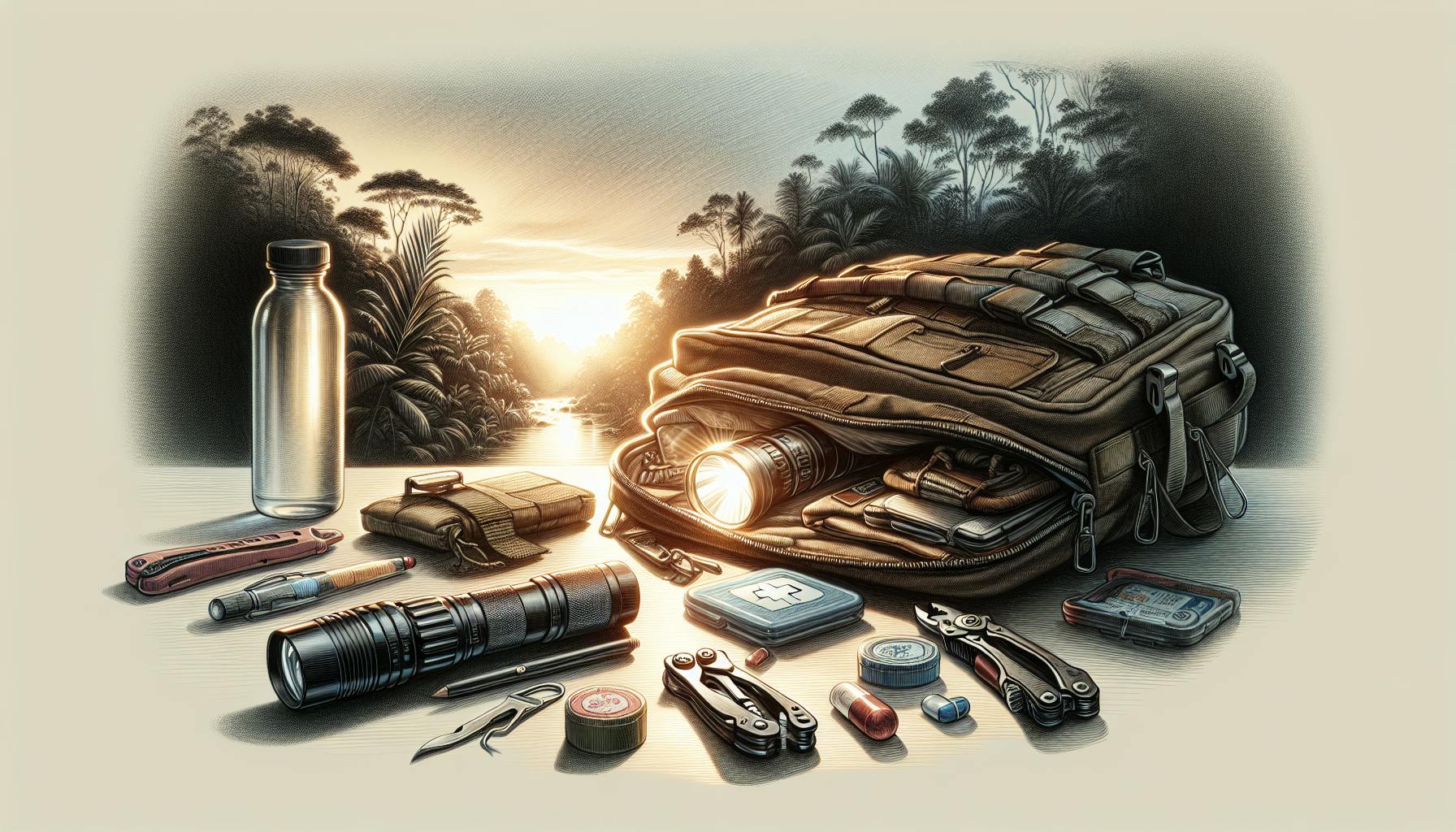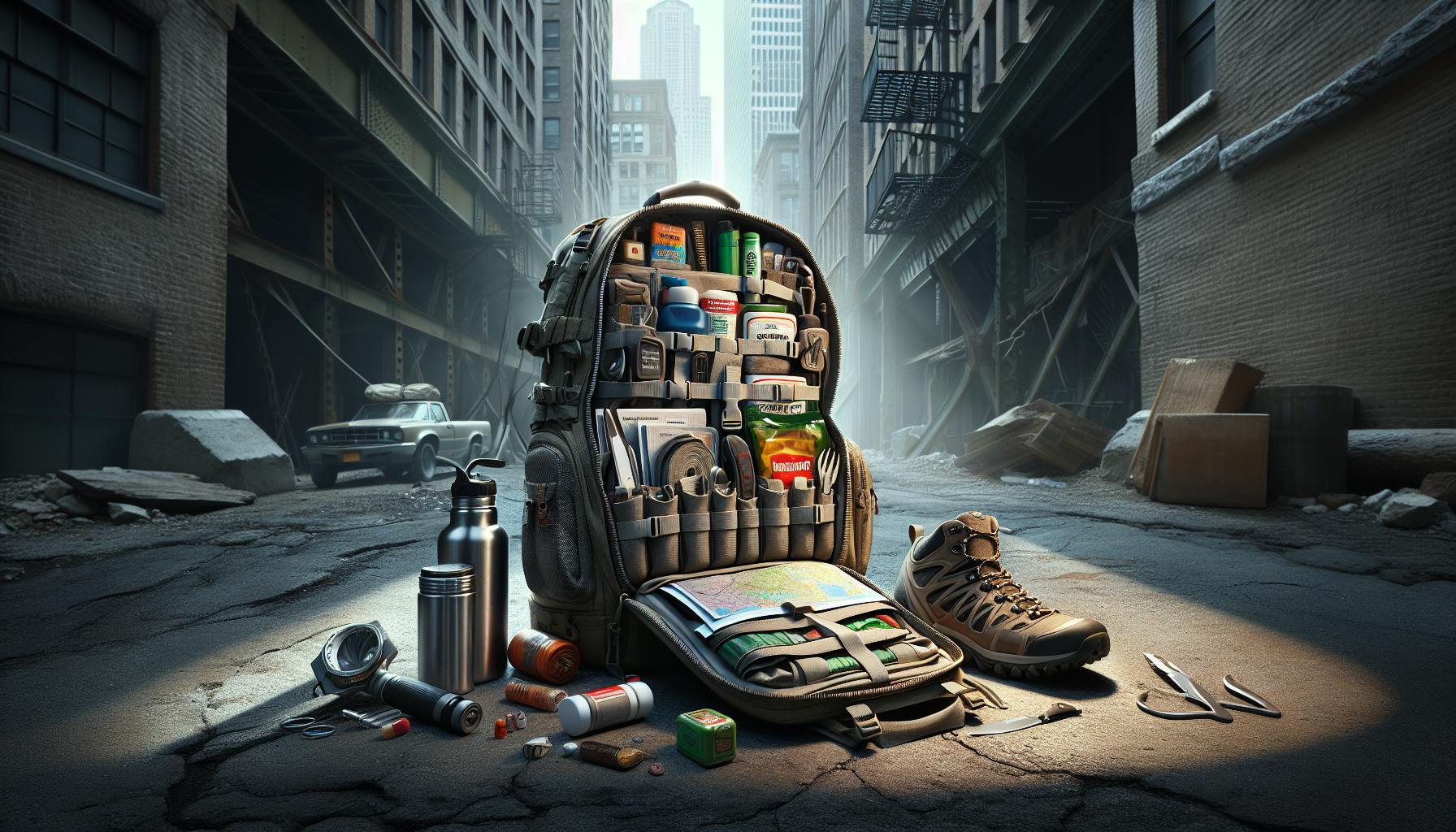Why Bunkers May Not Be the Best Option for Preppers
Building an underground bunker may seem like the ultimate way to prepare for emergencies and survive a disaster scenario. However, bunkers come with major downsides that preppers should consider carefully before committing resources to constructing one. Here are some of the top reasons why bunkers may not be the ideal choice:
-
Bunkers are extremely expensive to build and maintain properly over time. The initial construction costs can easily exceed $50,000 or more for a barebones structure, with complex installations driving the price up into the hundreds of thousands. You'll also need expensive ventilation, air filtration, plumbing, and power systems. Ongoing maintenance, repairs, and restocking supplies further adds to long-term costs.
-
Living in an underground bunker can start to feel claustrophobic and isolating over time. Lack of natural light, fresh air, and space takes a psychological toll, leading to paranoia, tension, and a "bunker mentality" after months cooped up. Boredom sets in quickly with the same routines and people day after day.
-
It's incredibly challenging to stockpile enough food, water, medicine, and other vital resources to sustain life for more than a few weeks or months. The logistics and storage space needed are immense. Supplies expire and run out. Unexpected health issues further strain limited resources.
-
Being sealed away in a bunker makes it nearly impossible to get expert medical assistance if someone has an accident or acute illness. Communicable disease outbreaks, chronic conditions, and dental issues become very serious when professional care and oversight are totally lacking for long periods.
-
If others in the community discover your bunker and stockpiles, you could become a target when desperation sets in. Attempted break-ins, theft, and violence are real possibilities. You may face impossible ethical dilemmas over helping women, children, elderly and infirm outsiders while depleting your own limited resources.
The Exorbitant Expenses of Building Out a Bunker
Constructing and operating an effective bunker carries huge upfront price tags and ongoing costs:
-
Just the initial barebones construction can cost $50,000 and up depending on size, location, materials, and systems included. Complex engineering is usually required to build it safely, driving up expenses.
-
You'll need expensive water filtration, air ventilation, and electricity generation systems to support human life underground. Backup power from generators and fuel storage adds even more to costs.
-
Over time, constant maintenance and repairs will be needed, from critical systems to mundane wear and tear. Leaks, pump failures, filter replacements and more all cost money.
-
Ongoing food, water, medicine, and supply expenses are massive if you want to stockpile enough to shelter for more than a few weeks. Storage space fills up shockingly fast.
-
Operating systems 24/7 demands a large energy supply. Solar helps, but most bunkers still need expensive fuel for generators as backup.
The Drawbacks of Living in a Bunker
Beyond just the financial aspect, bunkers come with inherent downsides that impact quality of life and well-being:
-
Being confined below ground quickly becomes claustrophobic. Lack of fresh air and direct sunlight take a psychological toll over time, leading to paranoia, anxiety, and depression.
-
Isolation from the outside world breeds boredom, frustration, and tension between bunker inhabitants crammed into close quarters for long periods. Nerves fray after months cooped up together.
-
Living underground makes it hard to get exercise, enjoy nature and sunlight, or engage in normal hobbies and family activities. Physical and mental health inevitably suffer.
-
The constant confinement breeds a "bunker mentality" of paranoia, social regression, fixation on minutiae, and loss of broader perspective on life. Some may desperately crave escape.
-
If sealed away for an extended crisis, it's extremely difficult to sustain any sense of normalcy. Important milestones and activities are missed entirely.
Stockpiling Effective Amounts of Resources
Preppers may not appreciate just how much is required to stockpile a bunker with adequate critical supplies:
-
Even large bunkers would struggle to store enough water for more than a month or two per person. Water is bulky, heavy, and constantly being consumed.
-
Similarly, storing enough non-perishable food for more than a few months requires massive stocks and storage space. Anything fresh would be incredibly scarce.
-
Medical supplies like prescription medications, antibiotics, and tools have short shelf lives. Stocking years' worth is just not feasible.
-
No matter how thoroughly one prepares, unexpected problems crop up like accidents, infections, dental issues, mental health crises etc. These can rapidly drain limited reserves.
-
Energy needs often exceed expectations. Extended stays drive up ventilation, lighting, food preservation and cooking needs around the clock. Diesel for generators costs a fortune.
The Precariousness of Bunker Life
When sealed off underground, even small disruptions can become major threats:
-
Ventilation system failures could quickly turn the bunker toxic and uninhabitable if CO2 builds up and O2 runs low.
-
Flooding, groundwater seepage, or plumbing leaks can damage facilities and contaminate supplies. Mold blooms and odors take over.
-
Fires pose a deadly hazard, rapidly consuming oxygen while spewing toxic fumes in the confined space. Extinguishing flames without aid of firefighters is a challenge.
-
Communication failures isolate the bunker from vital news of when it's safe to emerge. Radios could die and wires get severed.
-
Collapse while occupants are inside is a disturbing possibility, trapping people indefinitely. Few bunkers are designed to withstand direct hits.
Accessing Medical Care from a Bunker
One stark reality of bunker life is lacking access to healthcare and medical expertise at a moment's notice:
-
Once sealed inside, there is no quick way to get professional medical assistance if someone has a health emergency or life-threatening illness.
-
Even if you have some supplies, communicating with doctors on the outside for guidance will be very limited. Few bunkers have top-tier med bays.
-
Those with chronic conditions often deteriorate when proper medicines and physician oversight are unavailable for prolonged periods.
-
New health threats like infections, diseases, injuries or acute illnesses can become very serious if only limited first-aid and supplies are on hand.
-
Dental problems, vision issues, mental health crises and sexual health needs often go unaddressed due to the isolation and lack of expertise.
When Others Discover Your Hidden Bunker
Securing a bunker's secrecy presents a true operational security challenge:
-
If word gets out about your well-stocked bunker, you become a prime target for the desperate and hungry. Others will come seeking life-saving resources.
-
Those who know about the bunker may forcibly attempt to breach the security to get inside, putting inhabitants in harm's way.
-
You'll need to be fully prepared to defend the bunker against intruders trying to take it by force to save themselves. But could you turn away a starving child?
-
Showing hospitality and sharing resources with extended friends and family could deplete your own stocks very quickly, jeopardizing survival.
-
The bunker crew may feel compelled to help innocents like women, children, elderly and infirm outsiders, rapidly creating impossible ethical dilemmas.
When a Bunker Can Make Sense
While bunkers have significant drawbacks for long-term habitation, there are some scenarios where they offer advantages:
-
As temporary shelter from immediate nuclear, chemical, or biological threats, a bunker can provide protection while the danger passes.
-
In regions prone to specific recurring threats like tornadoes, having an underground bunker nearby gives a safe zone.
-
For short-term use up to 2-4 weeks, bunkers can buy time while broader contingency plans are enacted.
-
In remote locations with few community resources, a bunker may be one of the only ways to stockpile substantial supplies.
-
For those with specialized medical needs, a bunker may be the only way to ensure access to treatment.
However, once the initial threat window closes, inhabitants still need sustainable resources and facilities if remaining in the bunker long-term.
Alternative Survival Tactics to Consider Instead
Rather than banking everything on a bunker, preppers should pursue well-rounded resilience across key domains:
-
Forming a network of trusted, like-minded neighbors and collaborating on survival plans improves outcomes for all involved. But beware of infiltration by those only looking to take advantage.
-
Focusing on health via fitness, nutrition, medical skills, sanitation, and strong immune systems prepares the body and mind to overcome challenges.
-
Learning fundamental skills like foraging, hunting, fire-making, food preservation, and navigation provides vital self-reliance without total isolation.
-
There are many low-cost, space-efficient ways to begin prepping suitable for normal households by rotating small supply caches.
-
Caching and rotating supplies avoids expiration waste while also minimizing loss if one stash is discovered or compromised.
Building Connections and Community
Prepping is strengthened when trusted neighbors actively cooperate and plan together:
-
Bartering goods and skills with others fosters relationships and interdependence. But avoid exploitation by those looking to take more than give.
-
Sharing knowledge, training together, and specializing creates social bonds and a broader skillset for the group.
-
Having trusted allies nearby provides support a bunker simply cannot replicate. Check-ins ensure no one falls through the cracks.
-
Specialized help from those with medical, engineering, defense or other niche skills becomes accessible to all. But ensure they are committed to the community's best interests.
-
Banding together makes it harder for external threats to overpower the group. There is safety in numbers.
Improving Health and Fitness
Well-rounded fitness prepares both body and mind to overcome adversity:
-
Good cardio endurance enables the stamina to keep moving and engage in manual labor as needed.
-
Strength training builds resilient muscles to complete physical tasks and carry/haul heavy supplies.
-
Flexibility and mobility help prevent injury and allow fluid movement in diverse situations.
-
Focusing on sound nutrition keeps the immune system strong and wards off disease.
-
Maintaining both physical and mental health is crucial. Isolation in a bunker can be very detrimental over time.
Learning Key Survival Skills
Self-reliance arises from knowledge and competency in core survival disciplines:
-
Foraging for edible plants, mushrooms and natural foods provides sustenance independent of stockpiles.
-
Trapping small game allows reliable access to animal protein as well as managing pests.
-
Hunting and fishing offer renewable sources of meat to offset stored food usage.
-
Fire skills are essential for light, heat, cooking food, boiling water, signaling, and tool crafting.
-
Navigation and orienteering abilities help identify and reach key locations like water, hunting grounds, shelters, and caches.
Starting Prepping on a Budget
It's possible to begin smart prepping without huge cash outlays:
-
Stockpile rice, beans, canned food, and water reserves over time. Buy a few extra each grocery trip.
-
Save money by buying commonly used staples like pasta, oatmeal, peanut butter, and canned tuna in bulk.
-
Purchase quality essential tools like knives, flint strikers, trauma kits, ropes, and multi-use gadgets. Buy once, cry once.
-
Learn skills like knot tying, fire starting, and compass reading during day hikes rather than buying more gear.
-
Repurpose everyday items already on hand creatively to fill survival roles before purchasing more equipment. An old t-shirt can be a water filter, bandage, tinder bundle or improvised bag. Reuse jars and bottles for storage. A shovel can dig latrines or be a weapon.
Rotating and Caching Supplies
Distributing resources helps ensure coverage despite disruptions:
-
Rotate stockpiles using oldest food, water, and medicine first to keep freshness and potency.
-
Caching critical supplies in multiple locations prevents single-point failure if one stash is discovered or compromised.
-
Keeping caches small, portable, and hidden makes them hard to find. Spread them across secure spots outside the home.
-
Having grab-and-go bags with 3 days of essentials facilitates rapid evacuation if needed. Redundancy is key.
-
Before expiration, swap out near-date supplies to prolong usable life. What is old news for you may help others just starting out.
Key Takeaways on Bunkers vs. Other Survival Tactics
In summary, while bunkers can serve limited purposes in specific disaster scenarios, they come with major drawbacks for long-term sustainability. Severe constraints on resources, physical and mental health, medical care, and quality of life cannot be overlooked. Well-rounded resilience supported by trusted community, preventive health, survival skills, and distributed resources likely represents a more robust approach for most preppers. By collaborating for mutual aid and caching supplies, survival outcomes can be strengthened at lower costs compared to bunkers. There is no one-size-fits-all solution, but understanding the pros and cons helps identify prudent preparations for both individuals and groups. Build layered resilience across all fronts, and don't put all eggs in one basket.


